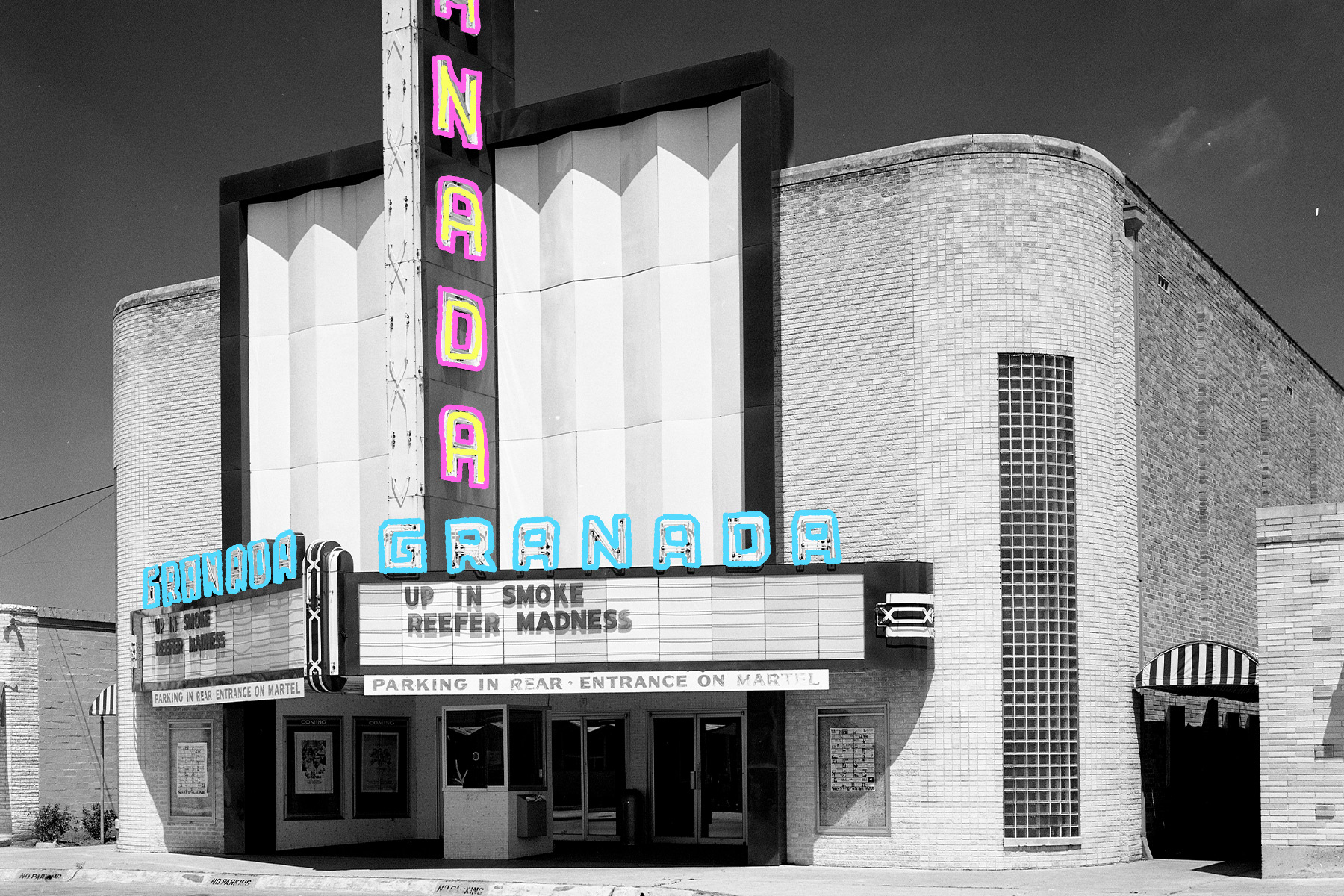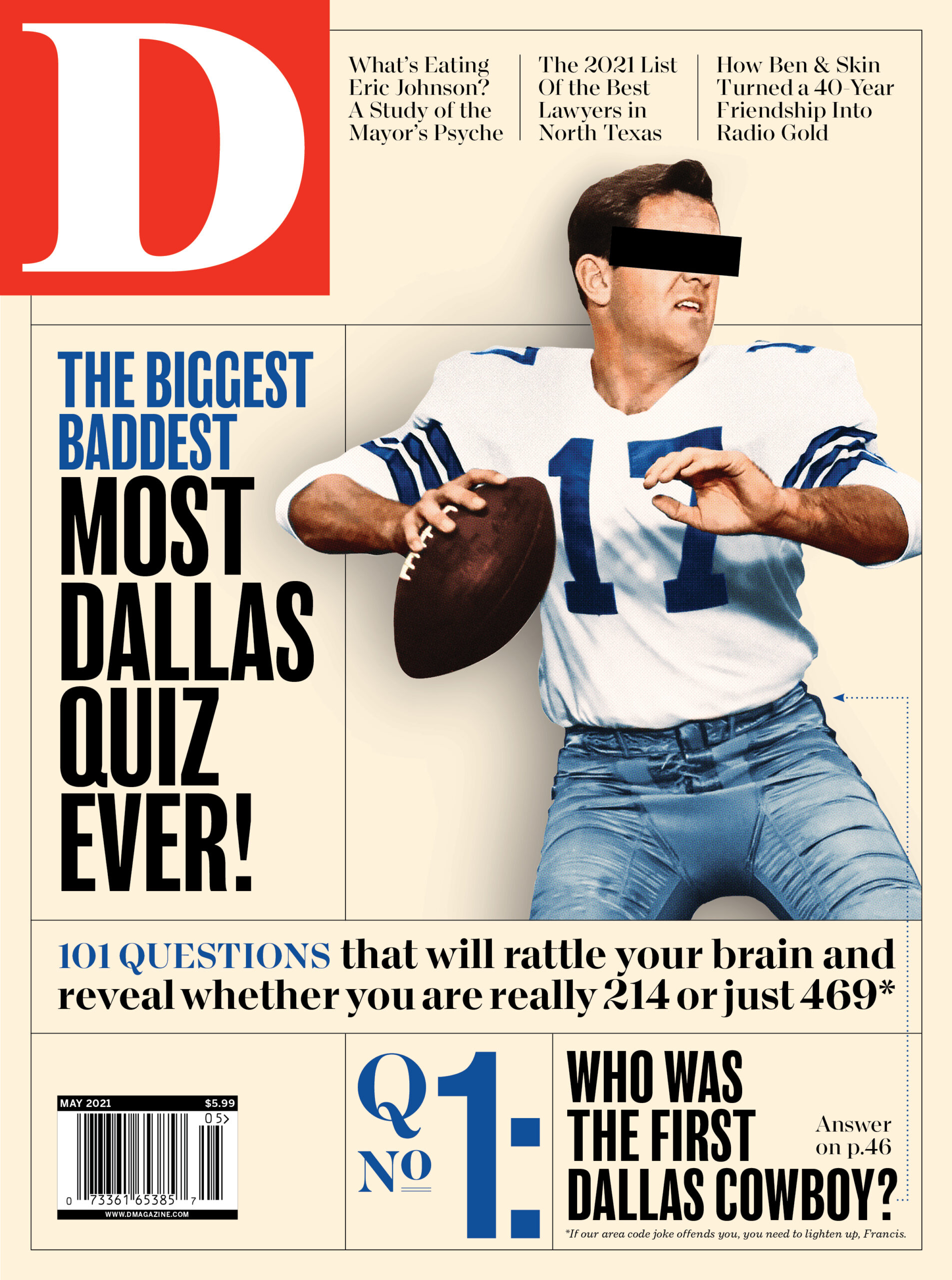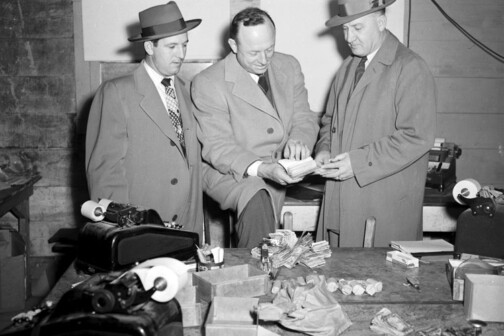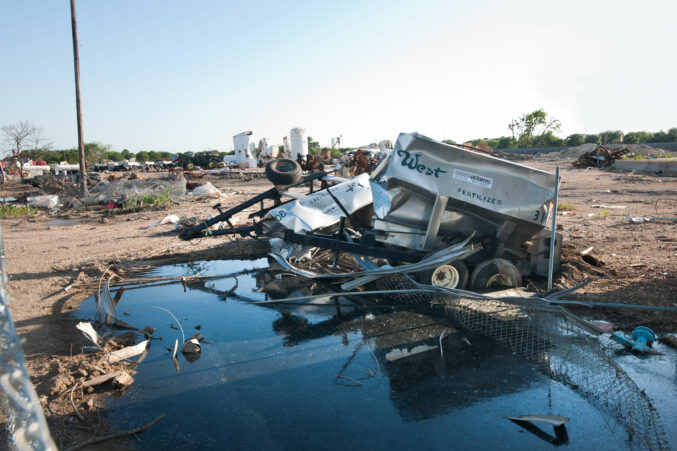15. Richardson’s Bette Nesmith Graham (1924-1980) had a claim to fame well before her son, Michael Nesmith, became a member of The Monkees. She was the inventor of Liquid Paper. She was a single mother working as a typist at Texas Bank & Trust when she invented the correction fluid, which she originally named Mistake Out. By 1979, she sold her company to the Gillette Corporation for $47.5 million and died of a stroke six months later, leaving $25 million to her famous son.
16. Before 7-Eleven became 7-Eleven, it was a small chain of 60 ice stores known as Tote’m Stores. They were small corner shops where one could pick up a few supplies and a block of ice wrapped in paper. After World War II, the company realized refrigeration was going to make its business obsolete and changed its purpose and its name, advertising the stores’ extended hours instead.

17. The original neon Mobile Oil flying horse, aka the Pegasus, stood atop the Magnolia Building from 1934 to 1999. Suffering structural issues, it was taken down and later replaced. The original went missing for 15 years and was eventually discovered in a shed by White Rock Lake. There was something unusual about it: It had bullet holes in it.
18. In 1951, Neiman Marcus opened its first suburban store. It was intended to be a “town and country store,” focused on moms and kids, with a basement playland complete with a bottomless orangeade dispenser. Today, the location of that suburb is better known as Preston Road, across from what is now Preston Center.
19. When Oak Cliff voted to go dry in 1958, it perhaps should not have come as a surprise. The area bragged about having more churches than any other neighborhood of Dallas (215) and more churches on a single block (there were 10 on 10th Street) than any other place in the world. Before the booze vote, Oak Cliff was jumping with nightclubs, with many featuring strippers, that lined what was then called the Fort Worth cutoff.
20. Lower Greenville’s Granada Theater is one of only a few remaining classic-era cinemas still operating in Dallas. The Granada is a concert and events venue now. But the owners left the murals from its 1946 heyday, which were designed by the same artists responsible for the work in Grauman’s Chinese Theater in Los Angeles. But they misspelled one word: “Documentery.”
21. Samuel B. Pryor was elected the first mayor of Dallas in 1856, after the city incorporated as a form of government run by six aldermen. Pryor was atop the governance structure, which also included a treasurer and a constable. His term lasted until 1857; he was voted mayor by a vote of 58 to 34. According to the Texas State Historical Association, Civil War records show that Pryor served as a first lieutenant in the Confederate Army in 1861 under John Jay Good, who would become mayor himself in 1880.
22. In 1897, Dallas, with its 300 saloons, became home to the Anti-Saloon League. The group paired with the Women’s Christian Temperance Movement and the Dallas Pastors Association. “The Saloons Must Go” banners were posted through the city, until their efforts were successful in 1917. The national ban wasn’t passed until 1919. Statewide, the city was known as Dripping Dry Dallas.
23. At Christmastime, the Galleria Dallas is home to the world’s tallest indoor Christmas tree. The star at the top is 10 feet tall.
24. R.L. Thornton (1880-1964), the four-term Dallas mayor and founder of the Citizens Council really did say all of these things:
- “If it’s a do meetin’, I’m goin’. If it’s a don’t meetin’, I’m stayin’ home.”
- “Ain’t nobody built anything big enough in Dallas. As soon as it’s built, it’s outgrowed.”
- “All these people complainin’ about traffic downtown. Hell, it’s easy. You got big business, you got traffic. You got traffic, you got a problem. If you don’t want a problem, you go to Forney, Texas. In Forney, Texas, they got no problem, no traffic, and no business.”
25. All of these things were created in North Texas: Topsy Tail, laser tag, the automated teller machine, the frozen margarita, Barney the dinosaur, the integrated circuit, the shopping center, the drive-in restaurant, voicemail, German chocolate cake, and Doritos.
26. In 1971, Al Lipscomb became the first Black candidate for Dallas mayor. He finished in third. Lipscomb was the plaintiff in a lawsuit that established Dallas’ current single-member council districts, arguing that the citywide election process disenfranchised Black and Hispanic residents. He was elected to the City Council in 1984 and served seven terms. He resigned from the City Council in 2000 after a federal bribery conviction, which was later overturned. Many Black elected officials credited his leadership as opening the door for them to run in the city. A street now bears his name in South Dallas.

27. Big Texas was born in Kerens, Texas, about 70 miles southeast of Dallas. The future Big Tex started as a 49-foot-tall Santa Claus looming above Colket Avenue, meant to encourage holiday sales. After two years, the statue was bought in 1951 by State Fair president R.L. Thornton for $750.
28. Former Mayor Erik Jonsson and his city manager, George Schrader, noticed a problem when the Texas Department of Transportation began working on Woodall Rodgers. It would sever downtown from the rest of the city. It was too late to stop construction, but the two men hatched a plan to at least halt it until it could be redesigned below grade: they shut off the water. More than half a century later, we got Klyde Warren Park over that below-ground highway.
29. Paul Quinn College was originally in Waco. In 1990, the powerful Black businessman and philanthropist Comer Cottrell purchased the bankrupt campus and facilities of Bishop College, another historically Black institution. Cottrell offered the site to Paul Quinn College, the oldest HBCU west of the Mississippi, which had experienced financial difficulties in the mid to late 1980s at its central Texas home.
30. Across the Dallas skyline you can find the work of legendary architects Santiago Calatrava, Philip Johnson, I.M. Pei, and Renzo Piano. Three of those—Johnson, Pei, and Piano—won the Pritzker Prize during their careers. Although Santiago Calatrava is responsible for the bone-white bridge that spans the Trinity River, he has never won a Pritzker Prize or designed a Dallas building, as Philip Johnson (Thanks-Giving Square, Comerica Bank, The Crescent, Cathedral of Hope), I.M. Pei (Fountain Place, Meyerson Symphony Center, Dallas City Hall), and Renzo Piano (Nasher Sculpture Center) have.
31. Dr. Robert E. Stoltz, onetime chairman of SMU’s psychology department, wrote the following as part of his commentary on the assassination of JFK:
“Dallas has tended to define ‘goodness’ in physical terms, such as the size and number of churches, length, breadth and height of buildings and expressways … . It ignores other statistics of ‘goodness’ which are available but less flattering—homicide rates, vehicular deaths, poverty, medical care for some types of patients, quality of education, evidences of real culture, etc.”
Stoltz wrote his lengthy professional explanation shortly after the murder, but it was kept under wraps until it was published in Warren Leslie’s 1964 book, Dallas Public and Private.
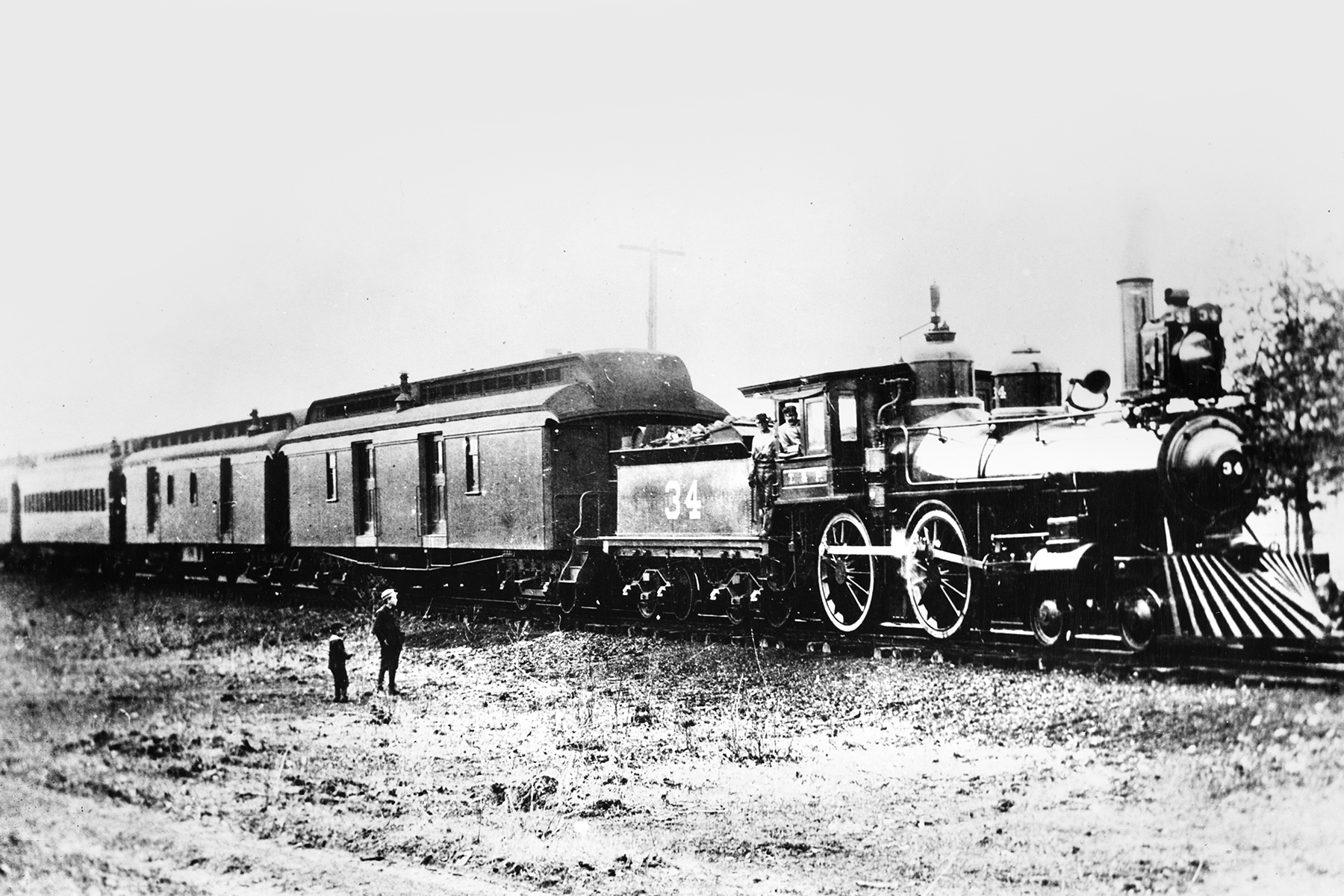
32. The first passenger train arrived in Dallas on July 16, 1872. The city celebrated by throwing a free picnic, which was attended by thousands of people. According to the Dallas Historical Society, the Houston and Texas Central Railway—which preceded the Union Pacific Railroad—was the first time the city saw its population balloon. The line eventually went up to Denison, where it connected with the Missouri, Kansas, and Texas Railroad, which shuttled passengers from Houston to St. Louis.
33. The Big Red Courthouse was constructed in 1892. But only after five other courthouses burned down. The first courthouse, a single-story log building constructed on land donated by John Neely Bryan, burned in 1846. Its replacement was built of brick but burned in the famous fire of 1862. When fire destroyed the third courthouse, in the early 1880s, it was rebuilt, only to burn down a year later. City leaders invested in a “fireproof” courthouse designed by architect James Flanders, but that building also burned, in 1890. Architect M.A. Orlopp finally designed Big Red using steel and stone materials similar to those used to rebuild Chicago after its Great Fire of 1871.
34. The entrepreneur Sarah Cockrell built the first bridge over the Trinity River. After her husband, Alexander, died in 1858, she took over the family’s businesses, including running a construction business, sawmill, and gristmill and developing a hotel. In 1860, she received a charter from the Texas Legislature to build an iron suspension bridge over the Trinity River. The bridge was not completed until after the Civil War, in 1872.
35. After the deadly 1908 flood, the only way Dallasites were able to cross the Trinity River was by boarding the Nellie Maurine, a pleasure boat owned by E.L. Gale that was named after his two daughters. Gale was a believer that shipyards and a wharf could be established in Dallas.
36. The Houston Street viaduct opened in 1912. Its claim to fame was that it was the longest concrete bridge in the world. After the flood of 1908 swept away most of the bridges connecting Oak Cliff to downtown, the 6,562-foot reinforced concrete viaduct was built at a cost of $570,000. Aside from a concrete handrail that was added in the early 1930s and the addition of stairs down to the Reunion Arena parking lot, little has been changed.
37. In 1944, Dallas had a prison camp that housed captured officers from Gen. Erwin Rommel’s Afrika Corps. at Winfrey Point at White Rock Lake.
38. John Armstrong and Thomas Marsalis established the town of Oak Cliff after helping to construct a commuter railway line across the Trinity River from downtown Dallas. In 1906, Armstrong split with Marsalis and purchased land north of Dallas to repeat the experiment. After establishing Highland Park, Armstrong died two years later, in 1908.
39. In 1899, Edward Howland Robinson “Ned” Green, the peg-legged millionaire heir to the Texas Midland Railroad, had a Phaeton delivered from St. Louis on his own railroad. Green was later behind the first 100-mile car race at Fair Park, in 1905. That Phaeton was the first car to ever be brought to Dallas.
40. People line up in Lexuses and horse-drawn carriages to see the Christmas lights in Highland Park every winter. But, beginning in the 1950s, the large number of azaleas caused people to make the annual pilgrimage each spring. First brought over by the La Reunion settlers, the flowering shrubs thrived in Lakewood and were popularized in Highland Park. Interest peaked in the ’60s and ’70s, with postcards showcasing the fuchsia-colored blooms.
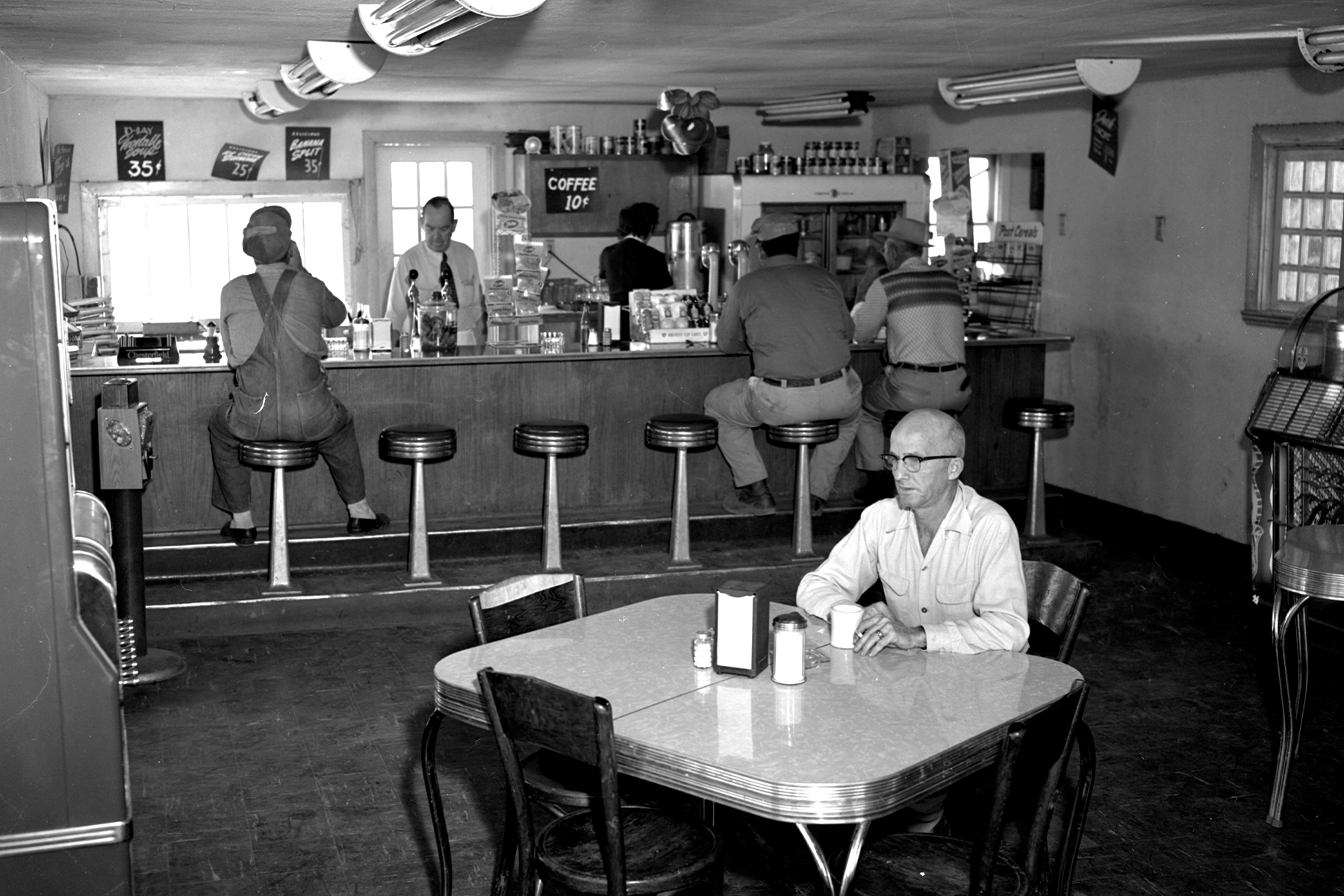
41. As the civil rights movement gained momentum in Texas during the 1960s, the department store H.L. Green, once located in downtown’s Wilson Building, was the first store in the city to desegregate its lunch counter.
42. In 1937, a State Fair sensation caused an international uproar. A virgin sacrifice was planned to be part of the Greater Texas and Pan-American Exposition. Ultimately, the damsel slated to reenact an Aztec human sacrifice ritual was replaced by the more historically accurate male warrior, per the request of the Mexican consul general, but the whole thing sparked fierce debate: sex and ticket sales vs. historical accuracy.
43. All of the following can be found at downtown’s J. Erik Jonsson Central Library:
- One of 25 extant broadside copies of the Declaration of Independence that were printed in Philadelphia on July 4, 1776
- A “first folio” of William Shakespeare’s Comedies, Histories & Tragedies, which was printed in 1623, shortly after the playwright’s death
- A handcrafted scale model of a Viking Drakkar longship that pays tribute to Jonsson’s Scandinavian heritage
44. WET Design, a Los Angeles-based firm founded by former Disney Imagineers, is responsible for such choreographed liquid marvels as the Fountains of Bellagio in Las Vegas; the Olympic Cauldron for the 2002 Winter Games in Salt Lake City, Utah; and The Dubai Fountain. You may already know that the company’s first major project, Fountain Place, was completed in Dallas in 1986. Dixieland jazz clarinetist Pete Fountain headlined the grand opening of the prism-shaped skyscraper and its revolutionary dancing fountain.
45. In Oak Cliff, an Ohio whiskey baron once turned Lake Cliff Park into “The Southwest’s Greatest Playground.” There was a mile-long roller coaster, a Japanese village, a 2,000-seat theater, and the world’s largest skating rink. Liquor distributor and Oak Cliff developer Charles Mangold bought 50 acres at the southeast corner of Zang and Colorado boulevards, where he built and opened an amusement park in 1906. After a fire destroyed a number of the attractions, he sold the property at a loss to the city of Dallas in 1914.
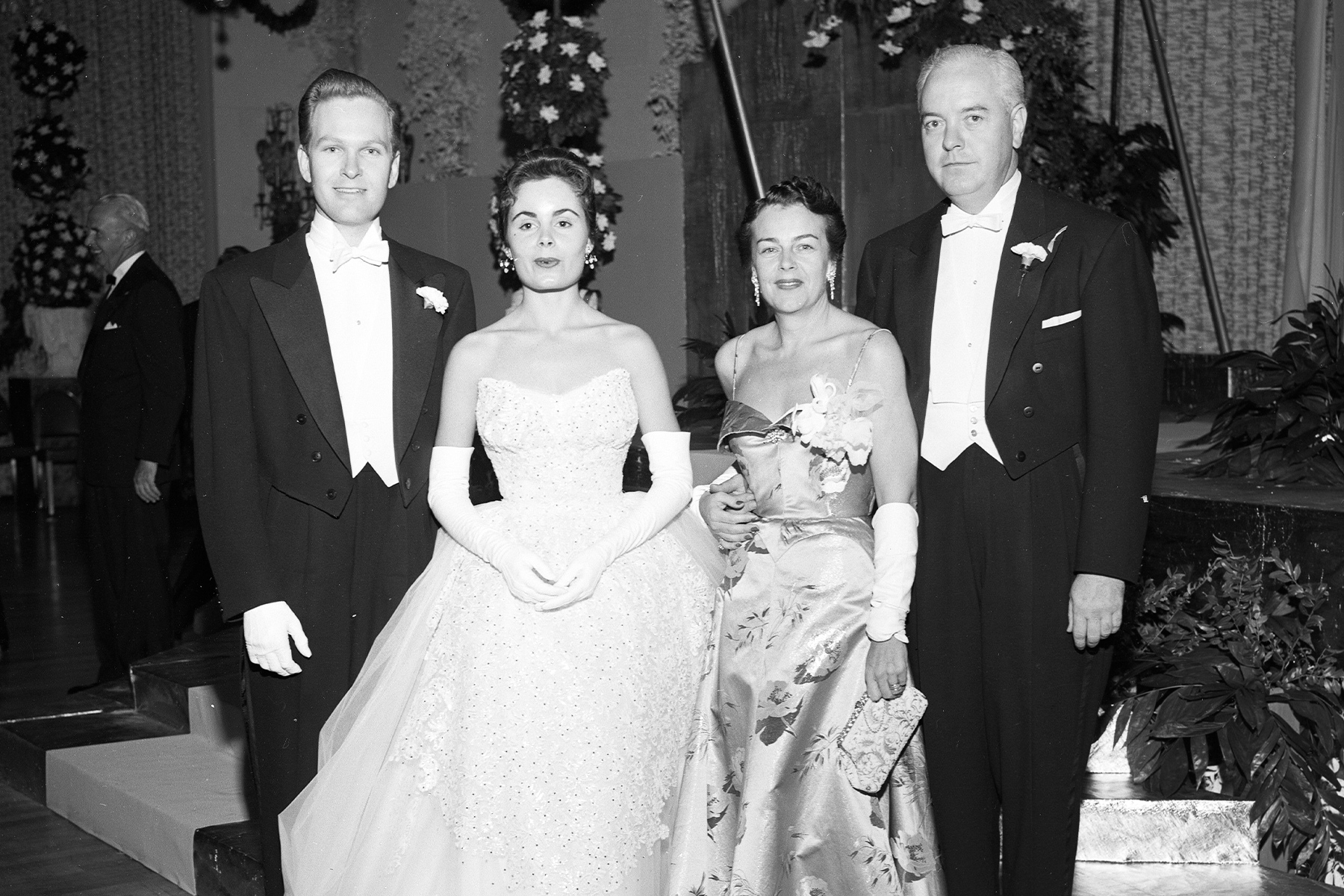
46. In 1925, Ginger Rogers won the statewide Charleston dance contest at the Baker Hotel in downtown Dallas. Ginger Rogers’ mother was a theater critic for the Fort Worth Record. Rogers said that waiting in the wings at the Majestic Theatre inspired her showbiz career.
47. In 1944, Juanita Craft became the first Black woman to vote in a Dallas County public election. The vote came after the Supreme Court decision in the case Smith v. Allwright, which overturned a Texas state law that authorized parties to set their own voting rules. The Democratic Party in Texas had used this rule to hold all-White primary elections, and since the party dominated state politics, the primary was essentially the general election. Craft later served as a Democratic precinct chair for 20 years and served on the Dallas City Council.
48. In the late 1980s, highway engineers tasked with expanding Central Expressway anticipated moving about a dozen graves that had been paved over when the road was originally built in the ‘40s. They found many, many more. A team of archaeologists in collaboration with the Black Dallas Remembered Inc. historical society exhumed more than 1,500 bodies from their graves under Lemmon Avenue. Historian and Black Dallas Remembered founder Dr. Mamie McKnight advocated to relocate these graves, remnants from a freedman’s town established by former enslaved Dallasites, which became the largest cemetery excavation project in the country.
49. The well-to-do residents of Swiss Avenue, Dallas’ first designated historic district, had a trolley line that ran behind its houses, down what’s now an alleyway between Swiss and Gaston. The especially well-off owned private cars. It is long gone.
50. One Dallas mayor has been murdered. The Swiss-born Benjamin Long (formerly Lang) came to Dallas as part of the La Reunion Colony. During the Civil War, he supported the Union and moved to Mexico. After the war, he was appointed mayor by the Reconstruction government and helped acquire land for the expansion of the Texas and Pacific Railroad. On June 23, 1877, following a dispute at a saloon with a patron who had not paid his tab, Long was shot and killed near the corner of Austin and Wood streets, near the present-day Omni Hotel.
51. Technically illegal, gambling was quite popular in the 1920s, ‘30s, and ‘40s. Eddie Zimmerman, Benny Binion, and Warren Diamond all owned gambling houses here. Belle Starr did not. Starr was notorious for horse stealing and other crimes, and was known to play a hand of poker or two, but she never operated a gambling operation. Eddie Zimmerman owned the Cipango Club, Warren Diamond operated out of the St. George Hotel, and Benny Binion hosted a dice game at the Southland Hotel, all under the blind eye of Sheriff “Smoot” Schmid (who ran the posse that gunned down Bonnie and Clyde).
52. Oak Lawn was once home to the first gay bar in the state, Club Reno, which opened in 1947. It is still home to Texas’ oldest Lesbian bar: Sue Ellen’s opened in 1989.
53. Built in 1917, the Palace Blacksmith Shop in the Carson Warehouse Building on Main Street is thought to be the last of its kind in Dallas.
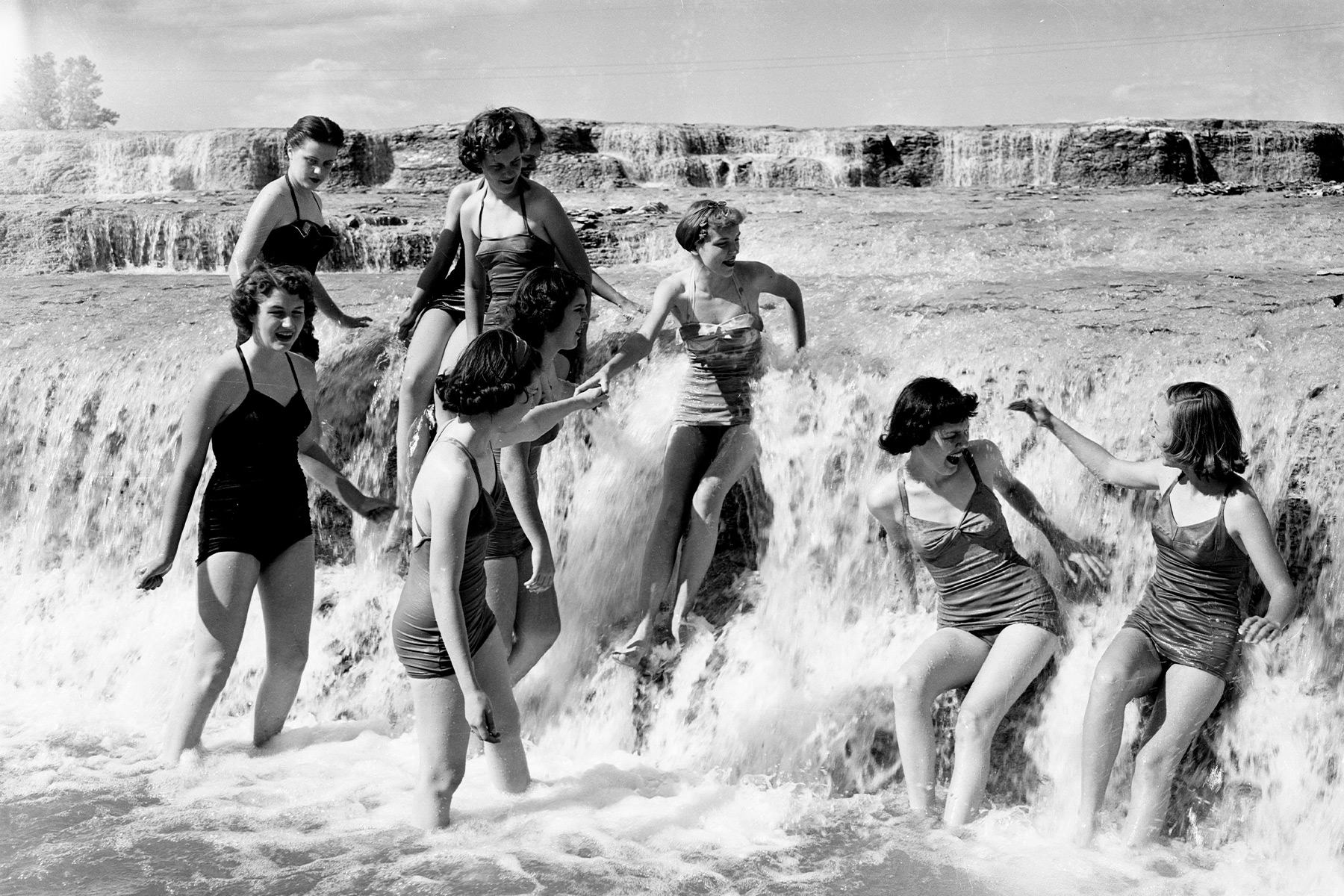
54. Swimming has been banned at White Rock Lake since September 1, 1952, when the city needed to use the reservoir as a water source following a drought. The city stopped drawing water from the lake in 1964, but the ordinance remained. Today, the lake is rich in nutrients for fish, but contaminants from the bacteria would likely make us humans sick.
55. According to the state of Texas, Oak Lawn by way of Cedar Springs is home to the earliest known historic site in Dallas County. Cedar Springs was a town settled in 1843, after Col. G.W. Cooke established it to build a military road from North Texas to Austin. The area was renamed Oak Lawn toward the end of the 19th century and was annexed by the city of Dallas between 1920 and 1940. An historic marker lives in Craddock Park, at Lemmon Avenue and the Dallas North Tollway.
56. The Dallas Museum of Art, originally known as the Dallas Art Association, had its first exhibition in the Adolphus Hotel in 1915. The museum’s first catalog of its permanent collection would be published the next year.
57. The Supreme Court of the United States issued a landmark First Amendment ruling after an American flag was burned during protests at the Republican National Convention in 1984. A group of protesters removed an American flag from the Mercantile Bank Building and handed it to Gregory Lee Johnson. He put it under his shirt, walked to City Hall, poured lighter fluid on the flag, and sparked it with a lighter. He was among 100 arrested during the act but the only one charged. The Supreme Court ruled it was protected speech in a 5-4 opinion.
58. In 1913, the city of Dallas refused to annex the suburb of Highland Park. Its 500 residents voted to incorporate in 1913, after the city of Dallas refused to annex it. Dallas tried to walk back its decision in 1919, but Highland Park held strong.
59. Little Egypt was a freedman’s town near White Rock Lake that was all but forgotten until a Richland College professor led an architectural dig. Little Egypt was settled by freed slaves in 1880. The neighborhood was at the corner of modern-day Thurgood Lane and Shoreview Road, in Lake Highlands.
60. According to Houston attorney Brian White, who conducted a study in 2016 to analyze 2 million traffic accident records in the state of Texas, LBJ Freeway at Skillman Street is the most dangerous intersection in Dallas, which was the site of more than 130 wrecks and 100 injuries over three years.
Author



